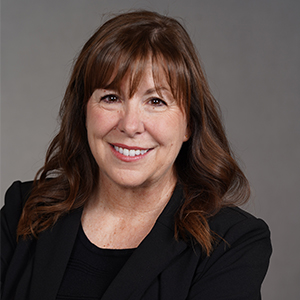Editor in Chief Sarah Wheeler sat down with Trevor Gauthier, CEO at ACES Quality Management, to talk about the benefits of tech partnerships and how the company is building a moat around their regulatory and compliance business.
Sarah Wheeler: How do you think about build versus buy?
Trevor Gauthier: For us, it’s actually four-fold. We look at building, purchasing or licensing, partnering and potential acquisition. We build when something is in our sweet spot, a natural move to the next thing that rounds out the platform. We would license or buy for something that is core to what we want to provide but there are off-the-shelf solutions that do it better than we could, even after five years of development.
We partner when there’s a software solution that could benefit compliance and regulatory folks but it’s not in our sweet spot and you’re not going to get big penetration numbers — you might only have five or 10% of folks that are using that. We look to acquire when it’s an area that we know we want to go deeper into: We look out at our roadmap and say, Hey, we can do this, but it’s going to take us two, three, four years to get significant penetration in that area. So if we acquire it, we can get a customer base that’s already there, have revenue generated and kind of launch into that space.
We are a software company so certainly our sweet spot is building. We’ve been around for a while so our core technology is strong and we don’t have a lot of tech debt so we can move really quick. There are a lot of really cool companies out there to partner with and we enjoy working with them. It’s always good to get somebody else that’s kind of in your orbit, that’s doing something different because whether it’s via acquisition or via partnership, the light bulb goes on in a couple of different areas, because they’re attacking it a little bit differently. You get the benefit of a different brain in there, which is great.
SW: How are you leveraging AI?
TG: We leverage that in a lot of different ways to support our customers, like a chatbot that helps with front-line support and with our helpdesk. Also in our user manuals, it gives people the ability to search our knowledge desk.
We are also looking to use it in other areas. We help our customers manage state and federal regulations for their audits and we tie that into the technology so that when they’re doing a specific audit, it’s pulling in the appropriate state and federal regulations. That’s pretty manual: we have a big team of compliance individuals and lawyers that are digging through like 60 to 100 different sources to get all this information, so we think there is some fit there.
Lastly, when you think about how customers are using the system, we’re dealing with data lakes and data warehouses, and just massive amounts of data from a variety of different systems of record. So we’re interested in any tools that can help dig through that data and speed the audit process. And then also looking at component size audits. For example, folks will say, ‘Hey, we’re currently testing 10% of the loans that we do, and we want to do a full audit on these 10%, but we want to do a partial audit on the other 90%.’ So how do we have the tools to do that audit really rapidly and have it be lightweight for them?
These essential tools are only as good as the data, and if you have poor data in, you’re going to get poor data out, no matter how sophisticated the tool sets are. So it’s a matter of skinnying down your use case to be able to truly use it on data that you believe is good to help speed the process. Because the folks we’re working with, they can’t have data only be 95% accurate — 95% might as well be zero. So when you’re looking at your use cases, you’ve got to get it up significantly higher than that for it to be beneficial.
SW: ACES has grown a lot over the last year, even while the larger mortgage industry has really shrunk. How have you kept growing?
TG: Loan quality is incredibly important right now and we touch everything that’s loan based — that’s consumer, that’s mortgage, that’s servicing. But then we go out into the organization and we also look at call monitoring and wealth management and social media monitoring — so just quality within the organization. And when units are down, every unit that goes through the business is that much more important and we see folks really focused on that and really looking to drive quality internally.
You always argue that it’s a good time to make a technology change in a down market, because you’re not as busy. But that’s hard, right? There’s a balancing act there because companies also don’t have the funds to do it necessarily. But we do see that as a good time to shift, especially if you’re planning for a market recovery, which I believe we all are, to position yourself for when that comes to be in a better position.
Secondly, and even bigger for us, is that in the space that we play, we’re defining what it is to be a quality management platform. In a lot of the institutions that we go into, I would say pretty close to 50% don’t have any technology solution in place. I mean, they’re using like Excel and Microsoft or a reporting tool and a hodgepodge of tools to do what our solution does. So in a time where folks are looking at cost and cutting staff, our value proposition to them is bringing in our toolset and they can do significantly more with the same staff they have today.
We’ve also done a really good job focusing on parts of the industry that are in fact growing. So, servicers, banks, credit unions and housing finance authorities. An area that was growing exponentially more than other areas was consumer lending and that’s across the board — that’s auto, and some could argue that’s also wealth management. So getting into those areas and having the folks that are coming on board understand that they can start in consumer and then when mortgage comes back they can layer that in. It gives them a starting point in an area that’s doing well and then they can bring this in before the market turns.
SW: You mentioned that ACES doesn’t have a lot of technology debt — how did you accomplish that?
TG: It’s been constantly evolving. We have a really incredible tech team that is regularly upgrading technologies and architectures. As we bring out new products, like ACES Protect, we look to leverage new technology right out of the gate, as opposed to building it in old and then tying it in. With that technology platform, for instance, we went right into the cloud. We also have been very fortunate, in that everybody’s on the same platform. So in summer of 2019, we moved everybody into our hosted solutions. Getting everybody on that and not having one-off customized solutions for your users allows you to continuously move and upgrade.
And then just having teams focus. When you look at our backlog of bugs, it’s the lowest I’ve ever seen at any company I’ve been at. So to have releases going out and have your bug backlog down to a super manageable level, that allows you to focus on things that are actually pulling the technology forward, as opposed to little fires that you have to put out for your customers on every single release. We really turned a corner on that in the last couple of years and now we can have the product team lead us as opposed to our customer service team lead us through critical tickets.
SW: How do you think about cybersecurity?
TG: With our security staff on board and what we run through with our SOC audits — we have SOC 2 — we have a strong bead on it. Historically, we cut our teeth working for top lenders in space. Right now we have 50-60% of the top 25 lenders that leverage our platform. To do business with them it was paramount to start right out of the gate to implement their security policies, because financial institutions have some of the strongest ones in the world.
Our platform and our internal procedures and policies were really built around those top institutions from the ground up. And then we believe that we’re at a point now where we’re helping drive that for them also. So we are pulling from the best and the brightest on any given year. And we have a team of folks that are constantly out there looking to see what’s coming next and making sure that we’re building that into our protection. It’s constantly moving, I mean, it’s been a rough couple of months in our space and I think there are always lessons learned and then you just get that much stronger.
SW: What keeps you up at night?
TG: In addition to the security angle, we are in a nice position where we have some pretty significant daylight between us and our competition. So I think about maintaining that — we want to make sure that we’re broadening the platform in the right ways, that we’re keeping our customer satisfaction high.
I think there are things out there that will most certainly be game-changers in our space and we want to be the ones who are building on the platform to leverage that technology. We want to stay in front of everything, as opposed to something just blindsiding us and then coming into the marketplace and getting market share really rapidly. So that’s what keeps me up at night: making sure that we’re putting our chips in the right places as we invest into the next three to five years of the company.
SW: What differentiates your approach to technology?
TG: First, it has always been the people. When you look at our staff, those are folks that are incredibly active in the community that is around quality and QC professionals — they have lived it and breathed it! Then we’ve always worked with the top institutions in the space, so the user community and our people are really key to where we are today.
And then I would say, the shift several years ago that moved us outside of just mortgage. Mortgage is an incredible part of our business, but being able to offer technology that is truly an enterprise solution for quality that our customers are using around the globe is a great strength. And it’s something that’s a baseline for us to continue to build on.
It’ll be incredibly hard for somebody to come into our space and be able to tackle mortgage or servicing and pull in all those state and federal guidelines. But then to have a platform that can move outside of that, to branch out and do call monitoring and things like that, would be very difficult.






